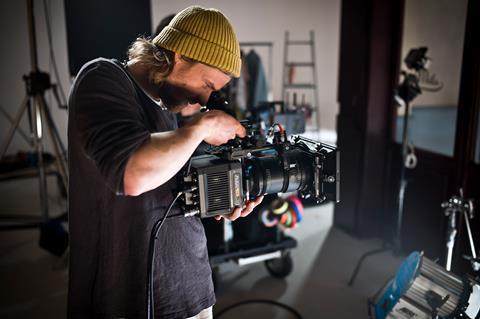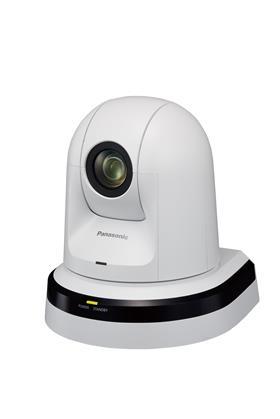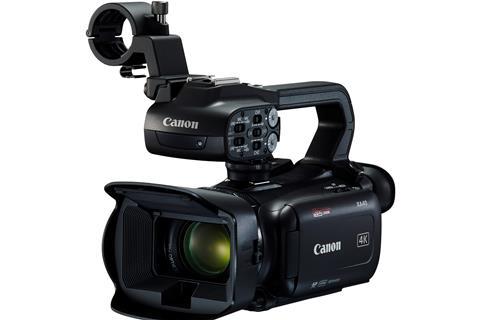Although support for 4K/UHD production is steadily growing in importance, value for money, general functionality and flexibility remain priority concerns for users.

It would be difficult to recall a ‘quiet’ NAB in camera world since the introduction of HD, whilst the more recent arrival of 4K/UHD has only served to accelerate the rate of new launches.
But away from the question of format, there are more enduring concerns – such as general multi-functionality, ease of use and value for money – that continue to define broadcast camera design. It’s safe to say that all of these considerations were in plentiful display at NAB 2019.

For manufacturers, opinions vary regarding the present growth of demand for cameras oriented towards 4K/UHD. For example, Panasonic UK product marketing specialist Oliver Newland says “there has been movement towards UHD, but it has been slow, and the bulk of the material is very much still working with HD workflows and not yet fully adopting HD.” Meanwhile, Canon Europe professional product marketing Europe Stephen Hart Dyke remarks that “4K televisions are slowly becoming the ‘norm’ in most households as the technology is becoming more affordable, and as such we’re naturally seeing the appetite for 4K content rise.”
But it seems unlikely that anyone would dispute the observation by Sony Professional Solutions Europe head of product management solutions Europe Norbert Paquet that broadcasters are universally seeking solutions offering “greater interoperability [and] flexibility” as the “pressure to create high quality content while keeping production costs to a minimum continues to grow”.
Hence there is a notable emphasis on versatility and functionality present in all of the launches from our four featured vendors – Arri, Canon, Panasonic and Sony – outlined below.
Innovation and immersiveness

Centre-stage at NAB 2019 for Arri was the Alexa Mini LF camera, which is based on a 4.5K version of the Alexa LF sensor and aims to enable customers to achieve “best overall production costs”. Designed to be compact, robust and easy to use on set, the Alexa LF Mini “allows filmmakers to explore the immersive large-format look, with improvements on the Alexa sensor’s famously natural colorimetry, pleasing skin tones, low noise, and suitability for High Dynamic Range (HDR) and Wide Color Gamut (WCG) workflows,” explains Henning Raedlein, head of marketing and digital workflow solutions camera systems, Arri.
Canon opted to showcase a number of its current 4K UHD cameras, including the XA40 palm-sized 4K UHD camcorder with 1/2.3-type sensor and 20x Optical zoom. The camera weighs approximately 730g (body only) and is geared towards allowing users “to work the way they want to, but always in the highest quality,” says Hart Dyke.
“With the combination of a 4K UHD 1/2.3-inch type CMOS sensor and DIGIC DV6 image processor, the XA40 delivers pristine 4K UHD images. In addition, superior Full HD images are assured with Over Sampling HD processing.”
- Read more: New at NAB: From 4K to 8K capture
Sony’s major launches at NAB 2019 included the latest addition to the HDC family of 4K live systems cameras – the HDC-5500 multi-format live camera system. According to Paquet “the HDC-5500 holds the world’s first high performance 2/3-inch 4K global shutter with three CMOS sensors that ensure superb image quality in HD, 4K and HDR live production. This allows the camera to capture pristine 4K images with exceptionally low noise (-62dB), impressive sensitivity (F10 at 1080/59.94p or F11 at 1080/50p) and High Dynamic Range, while achieving the ITU-R BT.2020 broadcast standard wide colour space. It’s also teamed with a specially developed LSI Digital Signal Processor that fully realises the extraordinary imaging power of this new sensor.”

Emphasising the demand for cameras that can satisfy the needs of multiple applications, Panasonic included the AW-HE42 PTZ camera amongst its NAB showcase. The camera is described as a cost-effective integrated PTZ that offers significant improvements in lensing, stabilisation and interfacing versus prior Panasonic models in this class. Newland explains: “The AW-HE42 Full HD remote PTZ camera offers a wide range of interfaces including 3G-SDI, HDMI, IP and Genlock, and features a wide horizontal viewing angle of 65.1 degrees, a 20x Optical zoom and 30x i.Zoom. The cameras are ideal for live production as well as education, especially when integrated as part of a wider lecture capture infrastructure.”
“There is a need to satisfy current production requirements and probable future ones, even as those are still in the process of being defined.”
IP, ST 2110 and 8K
For camera manufacturers, there is a need to satisfy current production requirements and probable future ones, even as those are still in the process of being defined. No prizes for guessing that IP and, in particular, compatibility with the SMPTE ST 2110 standards suite is near the top of many priority lists; on the other hand, the interest expressed in 8K could still be seen as surprising in some quarters.
Highlighting in particular the rise of 4K/UHD production, Hart Dyke says that Canon remains focused on “end-to-end solutions that meet the industry’s increasing standards while future-proofing users in response to shrinking broadcast teams – particularly within news gathering, where the requirement for highly compact, on-the-go cameras that can produce high quality content has risen.”
When it comes to camera design, Paquet says “image quality will remain king. Consumers are rapidly expecting better quality content than ever before – instantly and on more devices. 4K along with HDR will continue to play a big part in enabling broadcasters to satisfy audience demand for high quality content, especially with consumers demanding 4K content in their own homes. [Consequently] it is equally becoming increasingly important for streamlined workflows to allow broadcasters to create impressive live content effectively and efficiently.”

With 8K set to enjoy a high profile 2020 in sports, going ‘beyond 4K’ is starting to figure in the planning of more broadcasters, too. Hence there is an interest in “examining how 8K can be utilised as a canvas from which Full HD images can be extracted,” says Newland. “This is an exciting and extremely efficient potential production workflow. Panasonic’s 8K ROI system allows four separate crops from an 8K image; it’s able to reduce operational costs dramatically on many common events, making it well-suited to sports broadcasting, staging and studio applications. In addition, it helps increase revenue within live events because less space is required to house cameras within venues, therefore killing fewer seats.”
No matter in what way, or to what extent, broadcasters choose to implement UHD and HDR, there is no doubt that they now face an unprecedented abundance of choice. Content creators and filmmakers, says Arri’s Raedlein, “have so many options, so many ways to tell a story, depending on the type of production, the budget, and the shooting style of the cinematographer. Our goal is to offer professionals solutions for all requirements, with the best overall image quality and the best overall production costs.”
Tantalisingly though, Raedlein closes the conversation by revealing that Arri is currently working on a dedicated Super 35 4K camera “that is planned to be introduced in the first half of 2020 – further increasing the choices available to cinematographers.”
- Read more: NAB: Building virtual worlds
























No comments yet